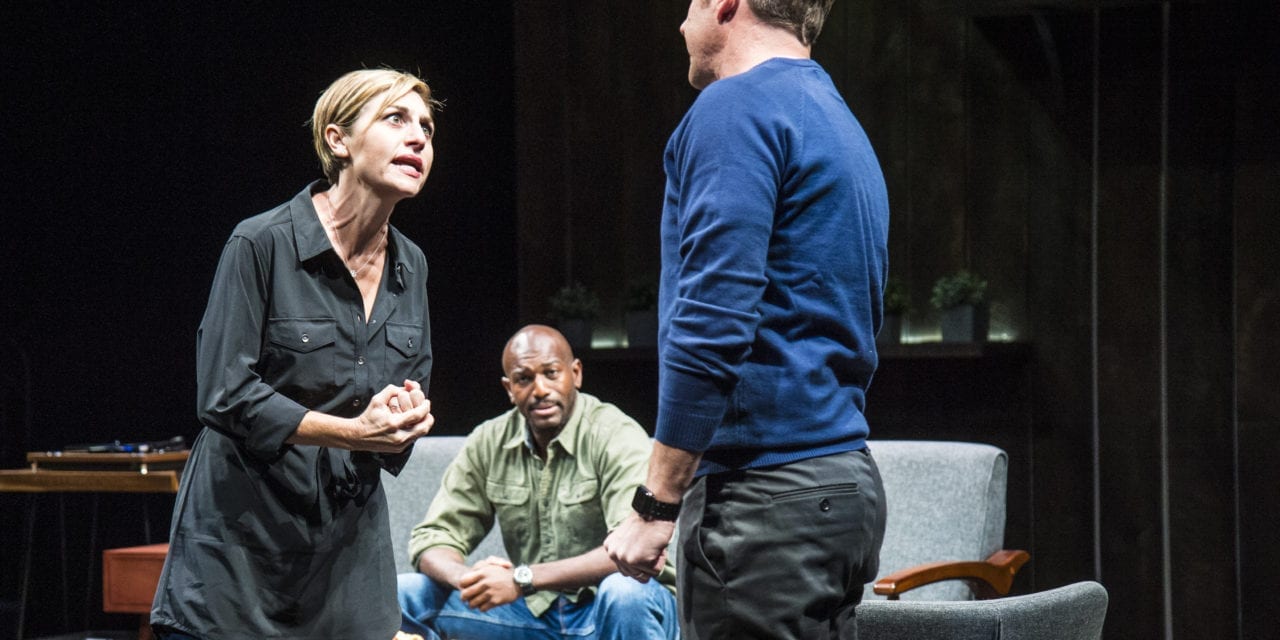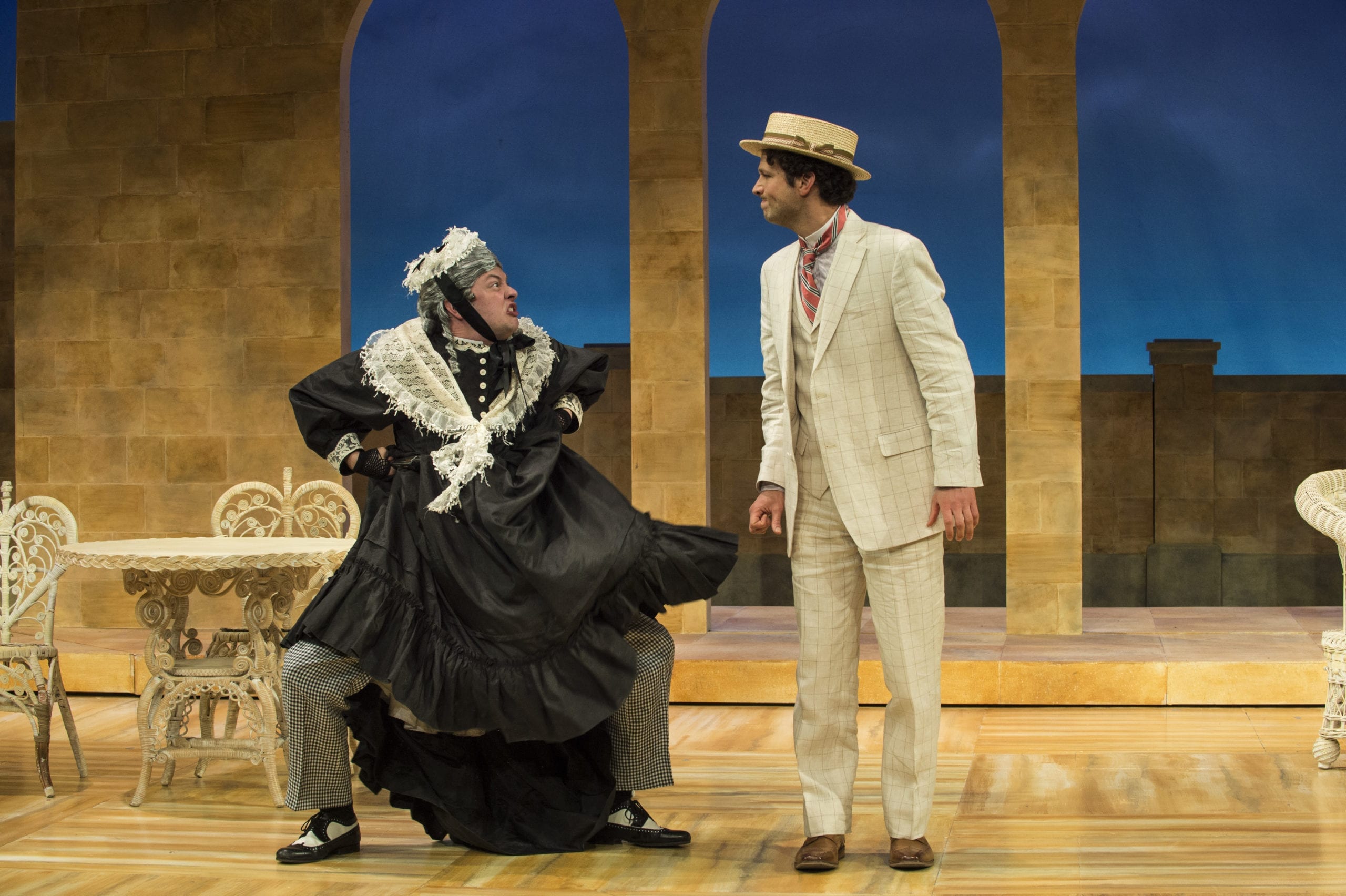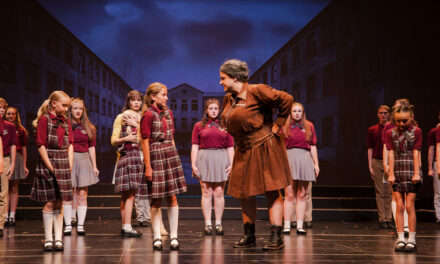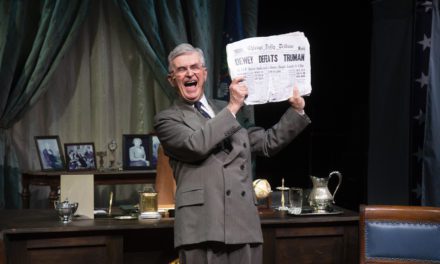CEDAR CITY — I saw denial, anger, bargaining, depression, and acceptance. Between the tragedies in Neil LaBute’s script, these stages of grief enveloped each character in waves. Because grief doesn’t only come from death; people experience many kinds of loss. In How to Fight Loneliness, three strong characters do battle with pain, sacrifice, and connection. With such universal themes, I truly believe that anyone can find something to connect with in this production.

Show closes October 14, 2017.
How to Fight Loneliness has made its world premiere at the Utah Shakespeare Festival this summer, after a 2016 workshop. The characters Brad and Jodie are, like so many real people, experiencing the effects of cancer. Their relationship has become strained, and Tate has been invited over to possibly help. Director David Ivers guided the story along like a subtle game of musical chairs and a trio of talented actors.
Brian Vaughn and Tessa Auberjonois play the married couple Brad and Jodie. There is an uncomfortable stiffness in their interaction, and the two actors barely have any physical contact. Even when seated near each other, Vaughn and Auberjonois make it clear that there is an insurmountable emotional barrier between them. Tate (played by Corey Jones) brings even more tension as the audience learns that he and Jodie have a shared past. From my seat in the Ames black box theater, I loved when the Jodie and Tate reminisce, leaning toward each other, but on opposite sides of the room, as Brad is framed between them in his place behind the sofa. I also noticed the moment when Jones is in a chair facing the other two, seated side by side, as he listens to their story, like couples in a counseling session. Ivers rotated these actors around the room to sit, lean, or stand in every possible configuration. These changes never felt arbitrary on Jo Winiarski’s neat and modern set.

Left to right: Tessa Auberjonois as Jodie, Corey Jones as Tate, and Brian Vaughn as Brad. (Photo by Karl Hugh. Copyright Utah Shakespeare Festival 2017.)
The music and sound design by Barry G. Funderburg was crucial for this show. The story would have hung like a lop-sided frame without the opening and closing of doors, cars passing on a road, and the music between scenes. Funderburg provided the score to accompany my unsettling imaginings during dark scene changes. The car headlights from lighting designer William Kirkham were a piece of that fitting accompaniment, as well.
Each actor impressed me. Vaughn was heartbreaking in the third scene, every bit of him. Auberjonois spoke LaBute’s words in the most passionate way. And Corey Jones was so versatile, whether playing the comforter or the villain. At times he looked huge as he chugged his Cherry Coke, and sometimes appeared impossibly small on the couch near the end. There is nowhere to hide and no room for error when there are only three people on stage. This cast excelled in every moment of the play.
There are multiple iterations of the grief cycle in this compelling play. Each character loves and hurts each other; Tate and Brad physically fight at one point. And the audience learns that every person’s choices affect those around them. As Vaughn is on his hands and knees, I heard his knuckles angrily hit the stage. How to Fight Loneliness felt so real; because of the talent that went into it, for sure, but also because nearly everyone has met cancer, grief, or loss. We’ve all felt loneliness—and need to fight it.
Note: This show deals with powerful adult themes and contains numerous incidence of explicit language. It is not appropriate for most teenagers or for others who find such content unpleasant.





